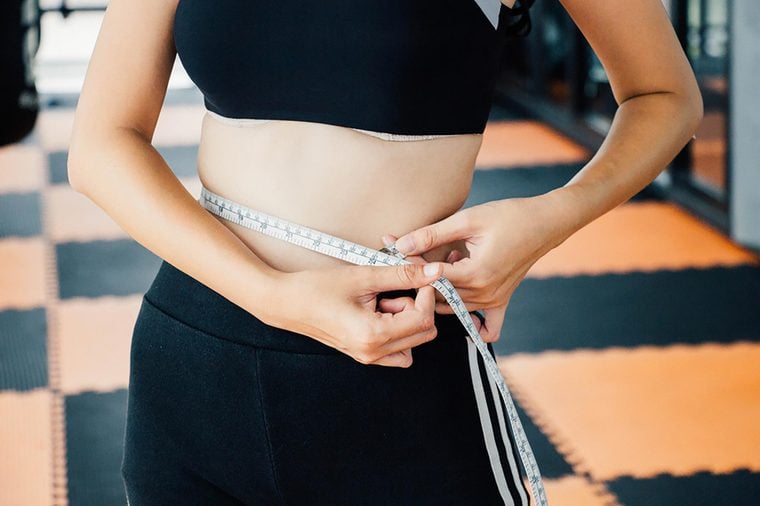
What is carb cycling?
Carbs have taken a lot of hits lately, but they still fit into a healthy diet—here’s how. Carb cycling means you change your carbohydrate intake from low carb to moderate to high carb day to day, week to week or monthly. You’re basically scheduling carbs for when you need them most—to enhance recovery, athletic performance or to meet physique goals.
Long-term low-carb diets can zap your energy and get boring. Alternating higher-carb and lower-carb days offers not only a physical and mental break from low carbing, but it could also help you get through weight-loss plateaus, speed up your metabolism and give you more energy for your workouts. It’s definitely more of an extreme dieting approach and has little research supporting its use. For the average person, it can be a headache to figure out and stick to.

How carb cycling was born
This diet trend started with high performance athletes, bodybuilders, and fitness models. The thought was, why not adjust carbohydrate intake so you could have carbs at the ready? And for sports where physique or weight is important, low carb helps the body shed water. But the approach can leave you feeling weak over time. So why not alternate low-carb and higher-carb periods to get the best of both worlds? It sounds like a great theory, but we still know very little about whether it’s helpful for fat loss. Here are six subtle signs that you’re eating too many carbs.

The theory behind the carb-cycling diet
When you’re on a low-carb diet or otherwise restricting your food, eventually your metabolism slows down, your hormones are out of whack and you experience fatigue and low mood.
The theory is that by alternating your carb amounts, your body won’t go into the negative effects of starvation. Rather than burning muscle for energy and storing more fat, having some higher-carb days could help your metabolism speed up again. “Refeeding” carbs can boost levels of testosterone, thyroid hormones (which will boost your metabolism), and leptin, a hormone that helps regulates your appetite. There is also some evidence that higher-carbohydrate days can help suppress hunger, great news if you’re struggling with weight loss.
Find out more about how to trick your hormones into helping you lose weight.
Cycling carbs may also be helpful if you’re looking to build muscle. Adding some higher-carb days into your low-carb plan helps you harness the power of insulin. Insulin is a hormone that moves glucose into cells where it can be used for energy. This allows amino acids from protein to be used for muscle repair and growth instead of using them as fuel. That’s why higher-carb days can help you boost insulin when you need it and help you gain muscle mass.

How to carb cycle for fat loss
Keep in mind that cycling carbs is an expert level nutrition approach that involves lots of math, patience and trial-and-error. I always recommend my clients keep things simple and make changes they can stick to for healthy weight loss.
If you’re still convinced you want to try alternating carb levels, know that like any weight-loss diet, you need to eat less calories than you burn for it to work.
There are different types of carb cycle diets, and the one that works for you won’t work for someone else. Hence the need for experimentation and patience. Cycling your carbs could be being low carb and then going higher carb for a week every two weeks, or it could be alternating between a low-carb and higher-carb day every other day. It all depends on your goals, exercise routine, and how your body responds. In general, it’s best to work out on your higher-carb days so you can energize and refuel. Find out which carbs you should be eating.
No matter which routine you choose, you’re cycling between low-carb and higher-carb days which also usually means your calories are lower and higher on those days. The amount of protein you get will be more consistent day to day. Then you can adjust fat intake to meet your calorie goals for each day. That means your low-carb days will be higher in fat and your higher-carb days will be lower in fat to get the right amount of calories for you.

Carb cycling sample menu
Here is an example of what a higher-carb and lower-carb day might look like. Meet with a dietitian and talk to your doctor before starting a new diet.
Lower-carb day
Breakfast: Eggs and egg whites with spinach, onion, and feta
Lunch: Large green salad with chicken breast, avocado, and dressing made with extra virgin olive oil and balsamic vinegar
Dinner: Zucchini noodles topped with crushed tomatoes, mushrooms, and lean ground beef
Snacks: Celery sticks with natural peanut butter, plain cottage cheese
Higher-carb day
Breakfast: Bodybuilder Pancakes made with oats and egg whites with berries
Lunch: Chicken breast with brown rice, broccoli, and avocado
Dinner: Salmon with sweet potato and roasted asparagus
Snacks: Apple with natural almond butter, Greek yogurt with sliced peaches or pineapple

Warnings and pitfalls
This diet isn’t without its downsides. Here’s what you need to know before jumping on the bandwagon.
It’s short term only. If you do try to carb cycle, note that it’s only for short-term use. There isn’t enough research to know how it affects people’s health, especially over the long-term.
Higher-carb days are not cheat days. It’s important that you choose healthy, fiber-rich carbohydrates such as whole grains, beans and lentils, sweet potatoes, and squash. Higher-carb days aren’t an excuse to dive into a box of doughnuts or overdo it on pasta. If you overeat on your higher-carb days, you will gain weight.
Beware of bingeing. Cycling between very strict low-carb diet days and then higher-carb days could put you into an “all or nothing” mindset. It’s far healthier to have a balanced way of eating that includes healthy carbs in moderate amounts rather than swtiching between low and high carb. We have research to support the benefits of a balanced diet for your overall health and your mental health.
Who shouldn’t carb cycle? If you have a mood disorder, metabolic syndrome, diabetes, heart disease, or you’re pregnant or breastfeeding, steer clear of this diet. You need a steady supply of fiber-rich carbohydrates to stay healthy.
The bottom line: There are more user-friendly ways to lose weight that you should try first. Meet with a registered dietitian who specializes in sports nutrition to figure out if alternating carb levels could help you reach your goals.
Learn more about the best crash diet for weight loss.

Does carb cycling work?
The short answer is, we don’t know. There are other ways to up your calorie burn—check out these 12 tips for getting the metabolism of a much younger person, for example. But food for thought, it seems that macronutrients such as carbohydrates don’t matter that much when it comes to losing weight and keeping it off. Calories are the key. A well-designed study followed over 400 overweight people on four weight-loss diets with different levels of macronutrients over 2 years. They found that the carb levels and macronutrient breakdowns didn’t matter; people ate the same amount of calories and lost the same amount of weight across the diet types.
I’ll say it again: The best diet is one you enjoy that you can maintain long-term—not the trendiest one!
